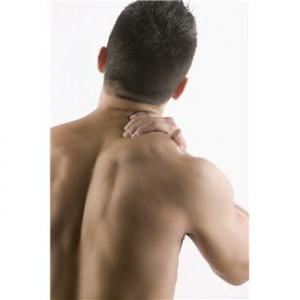Trigger points are a common cause of pain and most people will have pain points and many people will have trigger points that are so severe that they are debilitating and ruin the quality of life for the person. A trigger point is attached to a sensory nerve along to the spinal cord and straight back to the muscle cells. They create complex patterns such as walking, sitting and millions of other motions and activities.
Trigger Point Body Work – How To Identify Them
When this arc starts to malfunction the trigger points start to spasm which causes pain and discomfort. The muscle spindle starts to fire unnecessarily. It is often a small area of spasm. Inside the muscle is a trigger point complex which pulls a taut band in the muscle which feels like a guitar string in the muscle. You can see striations in the muscle.
When you see trigger points there is a contraction in and you can’t see the striations in the muscle which is a contraction or a knot. This contraction knot is a trigger point complex. The trigger point sets off a pain pattern which is specific to each trigger point.
One example of this is the muscle that goes from the top of the muscle which goes to the top of the neck. Pinch this area hard enough until you feel pain. The pain usually goes upwards. This is often the pain pattern you see. The pain is often dull, achy.
Another common trigger point is in your gluteal muscle which can radiate down the leg. Trigger points can cause pain in your face, gluts, chest, back or all over your body. Trigger points are the basis of chronic muscle pain and they occur very commonly. They are cause by a muscle reflex misfiring and they can be treated successfully.
Trigger Point Body Work Technique – How Do You Find Them
A trigger point is an area of low neurological activity when stimulated becomes an area of high neurological activity with or without a pain referral pattern. You can find trigger points with the tips of the fingers. If you close your eyes and and thumb and run the finger over the tips of your thumb you can become very sensitive to different sensations in the body. If you touch very gently then it is not likely to be a trigger point. If you lift the skin up and if you squeeze there and it hurts it can be something in the skin or the tissue but it’s not a trigger point.
You then want to feel the fascia which is a covering underneath the skin but over the muscles. If there is not tenderness there then it’s not a trigger point. The muscles fibers are underneath this layer. You are feeling for a tight band within the muscle. When you feel that band, you can become aware that there might be tender point or a thickening in the band and you might feel tenderness there. Then you can start to focus in on this area like a radar. As you press in firmly, you might feel something vague that is tender and there might be swelling. All of those factors make it a trigger point.
Trigger Point Body Work – How Does Massage Therapy Help
You want start to work the trigger point therapy at area of insertion of the muscles. It may or may not have a referral pattern. When you find the spot as you start to palpate you might feel some intensity. As you press down on this area, it might start to get more intense. As you press down on it you should feel like the pain is getting less or it should feel like the pain is lessening. If that is not happening then you should decrease the pressure on the points of the body.
Trigger Point Body Work – For Chronic Pain Relief
Trigger Point Therapy can be used for all kinds of chronic pain such as shoulder pain, headaches, neck pain as well as back pain. You want to start to find the trigger points on the top of the head and press for about 10 seconds and check for intensity to lessen. You want to check for tenderness and sensitivity.



